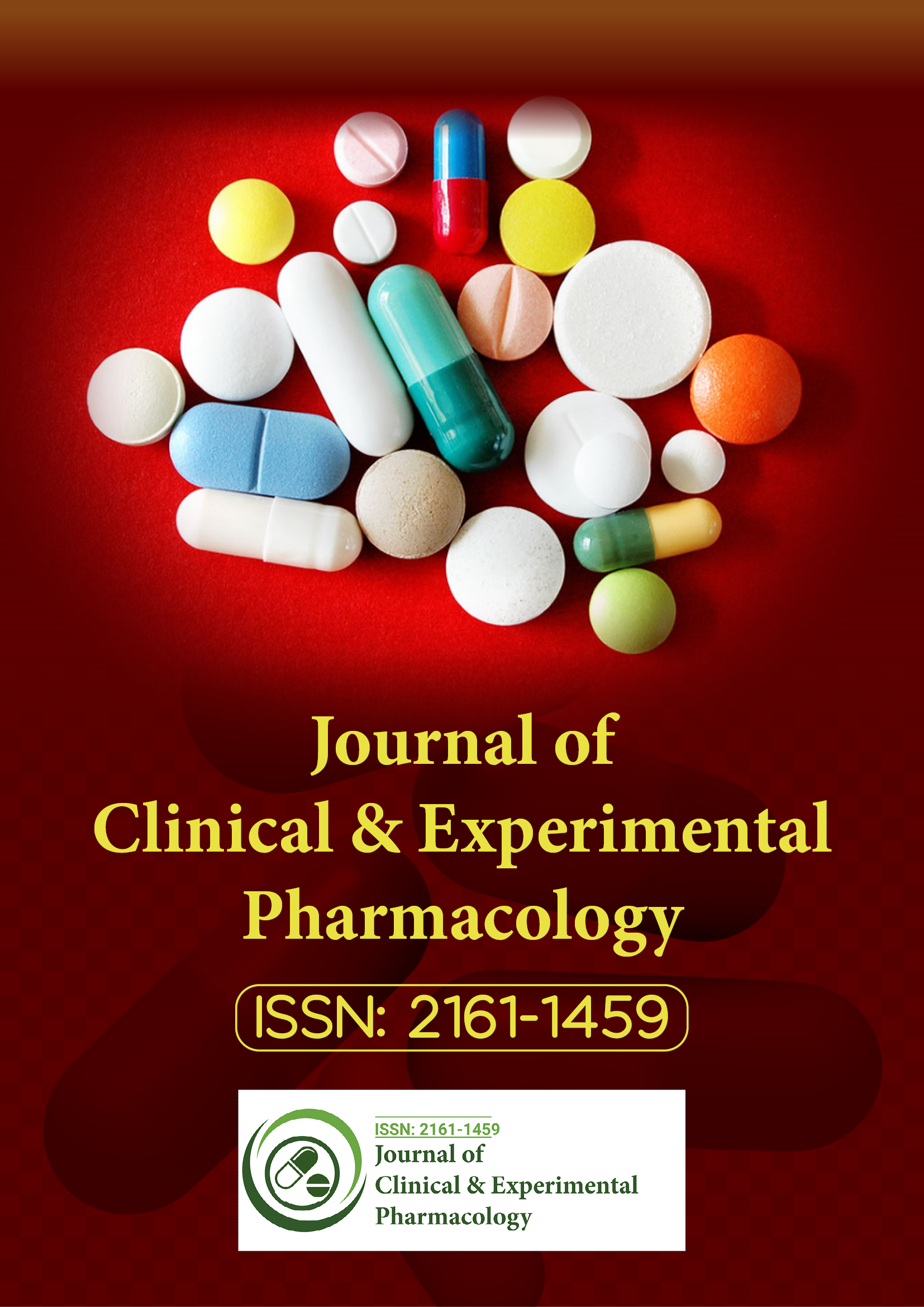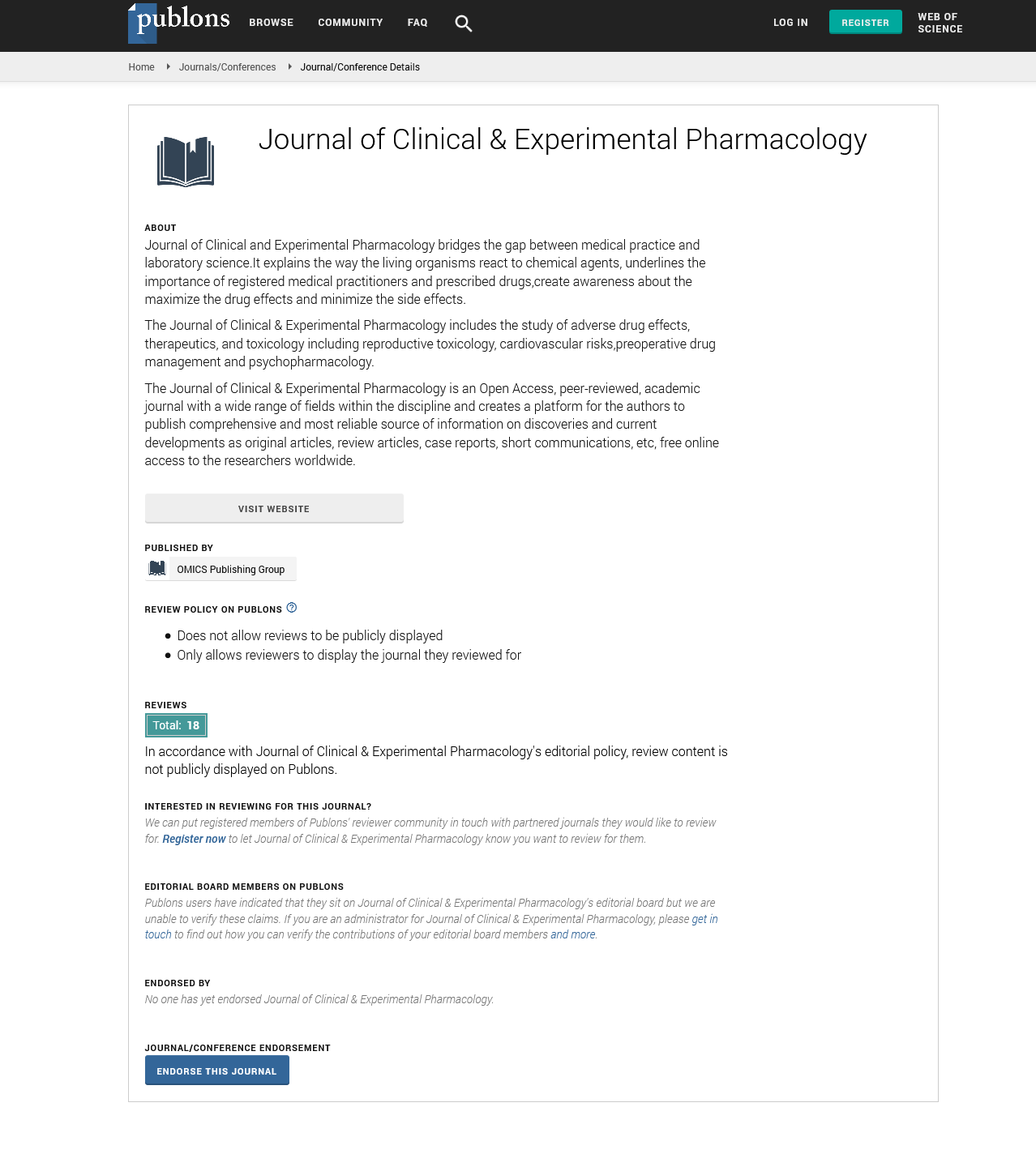Indexed In
- Open J Gate
- Genamics JournalSeek
- China National Knowledge Infrastructure (CNKI)
- Ulrich's Periodicals Directory
- RefSeek
- Hamdard University
- EBSCO A-Z
- OCLC- WorldCat
- Publons
- Google Scholar
Useful Links
Share This Page
Journal Flyer

Open Access Journals
- Agri and Aquaculture
- Biochemistry
- Bioinformatics & Systems Biology
- Business & Management
- Chemistry
- Clinical Sciences
- Engineering
- Food & Nutrition
- General Science
- Genetics & Molecular Biology
- Immunology & Microbiology
- Medical Sciences
- Neuroscience & Psychology
- Nursing & Health Care
- Pharmaceutical Sciences
Perspective - (2025) Volume 15, Issue 4
Nutraceutical Pharmacology: Linking Nutrition, Natural Products and Therapeutics
Rein Paul*Received: 01-Aug-2025, Manuscript No. CPECR-25-29880 ; Editor assigned: 04-Aug-2025, Pre QC No. CPECR-25-29880 (PQ); Reviewed: 19-Aug-2025, QC No. CPECR-25-29880 ; Revised: 27-Aug-2025, Manuscript No. CPECR-25-29880 (R); Published: 05-Sep-2025, DOI: 10.35248/2161-1459.25.15.495
Description
Nutraceutical Pharmacology explores the therapeutic potential of dietary components, functional foods and bioactive compounds derived from natural sources. The term “nutraceutical” encompasses a wide variety of products, including vitamins, minerals, phytochemicals, probiotics and dietary supplements, all of which may exert pharmacological effects on health and disease. This field bridges nutrition and pharmacology, examining how biologically active compounds influence cellular pathways, prevent disease and complement conventional therapies.
The foundation of nutraceutical pharmacology lies in understanding the pharmacokinetics and pharmacodynamics of natural compounds. Unlike synthetic drugs, nutraceuticals are often consumed in complex mixtures, making their absorption, metabolism and bioavailability critical determinants of therapeutic effect. For example, curcumin from turmeric has well-documented anti-inflammatory properties, but its poor solubility and rapid metabolism limit its efficacy. Research in nutraceutical pharmacology has therefore focused on developing formulations such as nanoparticles, liposomes and adjuvants to improve delivery and bioavailability.
Phytochemicals are central to this field. Compounds such as flavonoids, carotenoids, polyphenols and alkaloids exhibit antioxidant, anti-inflammatory and antimicrobial properties. Green tea catechins, resveratrol from grapes and lycopene from tomatoes are widely studied for their ability to reduce oxidative stress and modulate signaling pathways implicated in cancer, cardiovascular diseases and metabolic disorders. Nutraceutical pharmacology investigates how these compounds interact with molecular targets such as transcription factors, enzymes and receptors to exert protective effects.
The role of nutraceuticals in cardiovascular health is particularly noteworthy. Omega-3 fatty acids from fish oil, for instance, are associated with reduced triglyceride levels and improved endothelial function. Plant sterols have been shown to lower cholesterol by inhibiting intestinal absorption. Such compounds complement pharmaceutical interventions, providing holistic strategies for managing cardiovascular risk. Nutraceutical pharmacology evaluates these mechanisms to establish safe and effective recommendations for long-term health maintenance.
In the context of metabolic disorders, nutraceuticals play an expanding role. Compounds such as cinnamon polyphenols and berberine influence insulin signaling and glucose metabolism, offering benefits in type 2 diabetes. Similarly, probiotics and prebiotics modulate gut microbiota, which is increasingly recognized as a key player in obesity, inflammation and metabolic regulation. By studying these interactions, nutraceutical pharmacology advances the development of dietary interventions to support metabolic balance.
Neuroprotection is another growing area of research. Nutraceuticals such as omega-3 fatty acids, ginkgo biloba extracts and curcumin have been investigated for their potential to enhance cognitive function and slow neurodegeneration. These compounds act by modulating neurotransmission, reducing oxidative damage and improving cerebral blood flow. While not replacements for standard treatments, nutraceuticals may serve as adjuncts in conditions such as Alzheimer’s disease and Parkinson’s disease, where multifactorial mechanisms require broad therapeutic approaches.
The immune system also benefits from nutraceutical interventions. Vitamins such as C, D and E, along with minerals like zinc and selenium, support immune cell function and resilience against infections. Probiotics contribute to immune modulation by promoting healthy gut microbiota, influencing both innate and adaptive immunity. Nutraceutical pharmacology examines the dose-response relationships, safety and long-term effects of these interventions, ensuring their integration into preventive and therapeutic strategies.
Cancer prevention and adjunctive therapy represent another application. Polyphenols such as Epigallocatechin Gallate (EGCG) from green tea and curcumin have shown the ability to interfere with carcinogenic pathways, inhibit angiogenesis and promote apoptosis in cancer cells. While clinical outcomes vary, ongoing studies in nutraceutical pharmacology are identifying promising compounds that could enhance the efficacy of chemotherapeutic agents or reduce their toxicity.
Safety remains an essential consideration in nutraceutical pharmacology. Natural does not always equate to safe and improper use or interactions with prescription drugs can pose risks. For instance, St. John’s Wort can alter the metabolism of numerous drugs by inducing cytochrome P450 enzymes, reducing their effectiveness. Rigorous pharmacological studies are required to establish therapeutic windows, standardize formulations and ensure patient safety.
Conclusion
Nutraceutical pharmacology bridges the gap between diet and medicine, highlighting how bioactive compounds from natural sources can influence health and disease. By studying their pharmacokinetics, mechanisms of action and clinical outcomes, this field contributes to the development of preventive and adjunctive strategies for chronic conditions such as cardiovascular disease, diabetes, neurodegeneration and cancer. Although challenges related to bioavailability, standardization and safety remain, advancements in formulation science and molecular research are expanding the potential of nutraceuticals. As part of integrative healthcare, nutraceutical pharmacology provides opportunities to combine traditional dietary wisdom with modern scientific validation.
Citation: Paul R (2025). Nutraceutical Pharmacology: Linking Nutrition, Natural Products and Therapeutics. J Clin Exp Pharmacol. 15:495.
Copyright: © 2025 Paul R. This is an open-access article distributed under the terms of the Creative Commons Attribution License, which permits unrestricted use, distribution and reproduction in any medium, provided the original author and source are credited.

